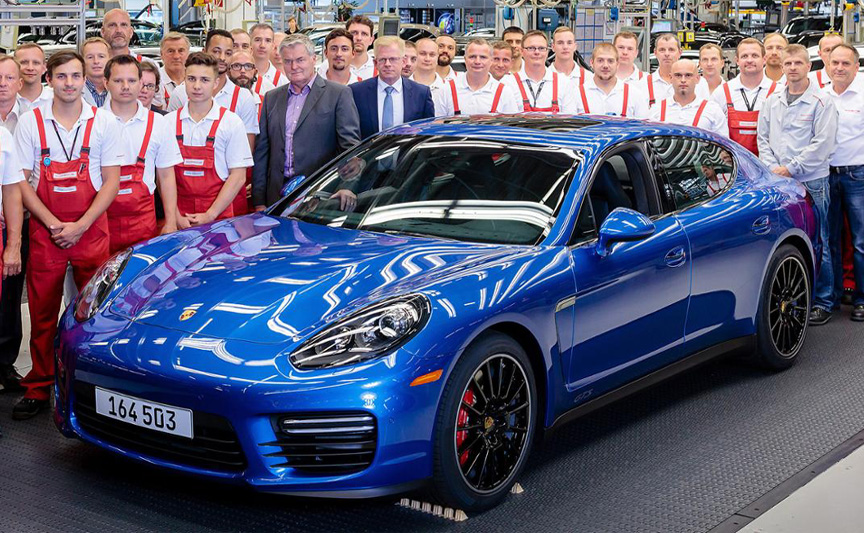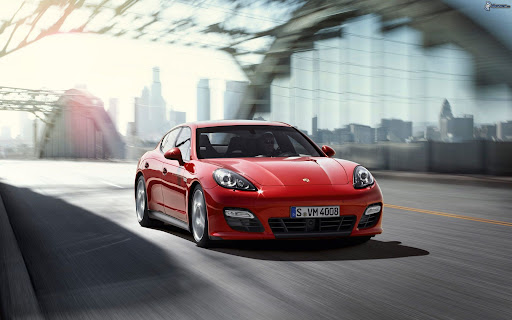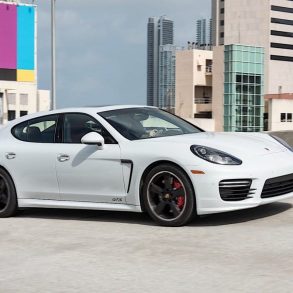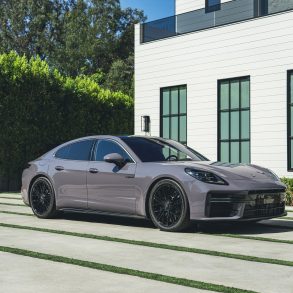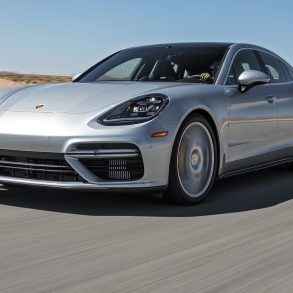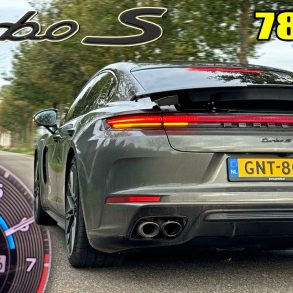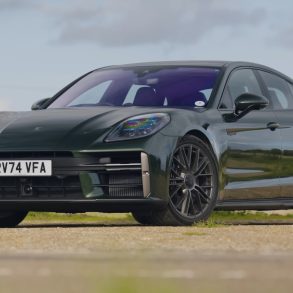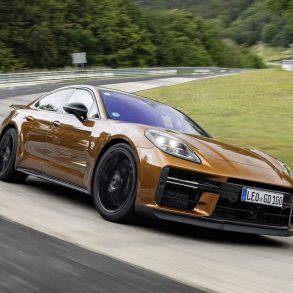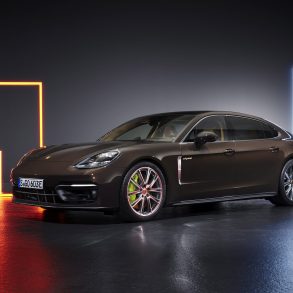1st Generation Porsche Panamera (970.2) Story & History
Panamera (2014 – 2016)
Official photos: 2013 April 3 / Premiere: 2013 April 20, Auto China press day / Market launch: 2013 July 27 (as 2014 model)
Performance Data (1st Gen Panamera 970.2)
| Modification | Drive | Engine | kW | lb-ft | Nm | Gearbox | 0-60 mph | 0-100 km/h | mph | km/h | DIN kg | DIN lb |
|---|---|---|---|---|---|---|---|---|---|---|---|---|
| Panamera Diesel (Turbo 3.0) 184 kW | RWD | Audi V6 | 184 | 404 | 550 | Tiptronic 8-sp. | 6.5 sec. | 6.8 sec. | 152 | 244 | 1,880 | 4,147 |
| Panamera Diesel (Turbo 3.0) 221 kW | RWD | Audi V6 | 221 | 478 | 650 | Tiptronic 8-sp. | 5.7 sec. | 6.0 sec. | 161 | 259 | 1,900 | 4,189 |
| Panamera (3.6) | RWD | Porsche V6 | 228 | 294 | 400 | PDK 7-speed | 6.0/*5.7 sec. | 6.3/*6.1 sec. | 161 | 259 | 1,770 | 3,902 |
| Panamera (Turbo 3.0) China | RWD | Porsche V6 | 235 | 309 | 420 | PDK 7-speed | 5.8/*5.6 sec. | 6.1/*5.9 sec. | 163 | 262 | ||
| Panamera (Turbo 3.0) LWB China | RWD | Porsche V6 | 235 | 309 | 420 | PDK 7-speed | 6.0/*5.8 sec. | 6.3/*6.1 sec. | 163 | 262 | ||
| Panamera 4 (3.6) | 4WD | Porsche V6 | 228 | 294 | 400 | PDK 7-speed | 5.8/*5.5 sec. | 6.1/*5.9 sec. | 160 | 257 | 1,820 | 4,012 |
| Panamera 4 (Turbo 3.0) China | 4WD | Porsche V6 | 235 | 309 | 420 | PDK 7-speed | 5.5/*5.3 sec. | 5.8/*5.6 sec. | 162 | 260 | ||
| Panamera 4 (Turbo 3.0) LWB China | 4WD | Porsche V6 | 235 | 309 | 420 | PDK 7-speed | 5.7/*5.5 sec. | 6.0/*5.8 sec. | 162 | 260 | ||
| Panamera Hybrid (Supercharged 3.0) | RWD | Audi V6 245kW + el.motor 70kW | 306 | 434 | 590 | Tiptronic 8-sp. | 5.2 sec. | 5.5 sec. | 168 | 270 | 2,095 | 4,619 |
| Panamera S (Turbo 3.0) | RWD | Porsche V6 | 309 | 382 | 520 | PDK 7-speed | 4.9/*4.6 sec. | 5.1/*4.8 sec. | 178 | 287 | 1,810 | 3,990 |
| Panamera S (Turbo 3.0) LWB China | RWD | Porsche V6 | 309 | 382 | 520 | PDK 7-speed | 5.1/*4.9 sec. | 5.3/*5.1 sec. | 178 | 287 | ||
| Panamera 4S (Turbo 3.0) | 4WD | Porsche V6 | 309 | 382 | 520 | PDK 7-speed | 4.6/*4.3 sec. | 4.8/*4.5 sec. | 178 | 286 | 1,870 | 4,123 |
| Panamera 4S (Turbo 3.0) LWB | 4WD | Porsche V6 | 309 | 382 | 520 | PDK 7-speed | 4.8/*4.5 sec. | 5.0/*4.8 sec. | 178 | 286 | 2,000 | 4,409 |
| Panamera GTS 4.8 | 4WD | Porsche V8 | 324 | 382 | 520 | PDK 7-speed | *4.2 sec. | *4.4 sec. | 179 | 288 | 1,925 | 4,244 |
| Panamera Turbo 4.8 | 4WD | Porsche V8 | 382 | 515 | 700 | PDK 7-speed | 3.9/*3.7 sec. | 4.1/*3.9 sec. | 190 | 305 | 1,970 | 4,343 |
| Panamera Turbo 4.8 LWB | 4WD | Porsche V8 | 382 | 515 | 700 | PDK 7-speed | 4.0/*3.8 sec. | 4.2/*4.0 sec. | 190 | 305 | 2,070 | 4,564 |
| Panamera Turbo S 4.8 | 4WD | Porsche V8 | 419 | 0 | 0 | PDK 7-speed | *3.6 sec. | *3.8 sec. | 193 | 310 | 1,995 | 4,398 |
| Panamera Turbo S 4.8 LWB | 4WD | Porsche V8 | 419 | 0 | 0 | PDK 7-speed | *3.7 sec. | *3.9 sec. | 193 | 310 | 2,080 | 4,587 |
1st Generation Panamera Refresh & Update
In May 2013 Porsche presented the 100.000th Panamera built. It was already the facelifted car that’s market launch was actually in the end of July.
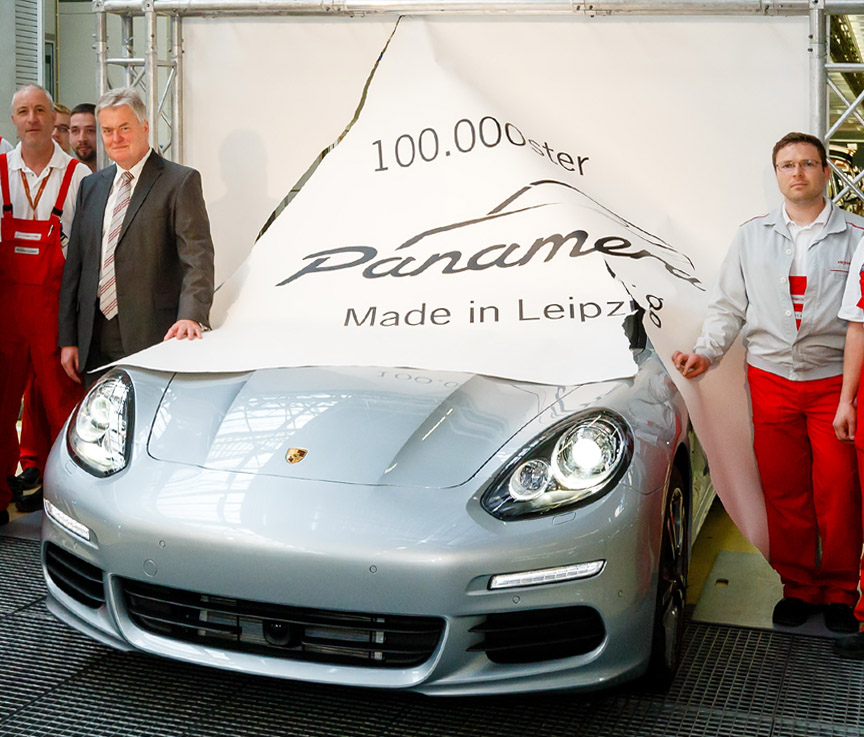
No manual gearbox
Only a few 970.1 cars were ordered with the manual gearbox and so it was discontinued for the 970.2. The 970.1 S with manual gearbox and rear-wheel-drive remains highly valued version among Porsche enthusiasts who have big children not fitting on the rear seat of the 911.
Engines
The 970.1 generation Panamera S and 4S had 4.8V8 engines, but to reduce the CO2 emissions, the 970.2 generation S and 4S got smaller 3.0V6 twin-turbo engines. In China, the 3.0 turbo in its detuned version was sold as a base model. For other markets the base model had a 3.6V6 Porsche engine (for comparison, the 3.6V6 in the Cayenne is a VW unit). The 3.0V6 Porsche turbo engine was developed in downsizing the 3.6V6 engine. Now, when most of the versions had twin-turbo engines like the Panamera Turbo, something should have been done to the naming of these cars. It was such a mess – the standard model in China had a Turbo 3.0 engine, in Europe the Turbo 3.0 was fitted into the S/4S and then there was the Turbo 4.8, but only that was called as “Turbo”. Not to speak of the Diesel model, which also could be called as a Panamera Turbo. The GTS was the only facelifted 970 that was equipped with a normally aspirated V8.
Plug-in hybrid
The 970.2 Hybrid was twice as good as the 970.1 Hybrid when it came to reducing the CO2 emissions, but with more batteries on board it was 115 kg/253 lb heavier than the already heavy first generation car. The 970.2 Hybrid launched in 2013 was the first plug-in hybrid from Porsche and the marketing department named it as Panamera S E-Hybrid. The petrol engine was the old Audi unit with the same amount of power as earlier, but the electrical motor was twice as powerful. Compared to the 1.7 kWh nickel metal hydride (NiMH) battery pack in the 970.1, the facelifted 970 Hybrid got a newly developed 9.4 kWh lithium-ion pack – a 5.5 time increase in capacity!
4S or GTS?
The 4S and GTS were more different than before and it is up to a personal taste to drive a 3-litre turbo car or a 4.8-litre normally aspirated one. Porsche positioned the GTS as a sportier version of the S/4S, despite it being heavier and having the V8 engine that belongs to a cruiser while the S/4S has a smaller turbo-engine that suits the sportier drivers.
Turbo S
The Turbo S was equipped in standard with everything Porsche had on offer and therefore it was heavier than the Panamera Turbo in standard configuration. In order to not loose in performance, new turbochargers were fitted to give extra power. The injection pressure was increased from 120 bar to 140 bar, pistons were made from a new aluminium alloy and the piston rings were specially coated. Compared to the standard Turbo, torque was increased from 700 to 750 Nm and to 800 Nm under overboost. The overboost function was activated in “Sport” and “Sport Plus” mode as well as during kickdown in “Normal” mode. The Turbo S came in standard with PDCC Porsche Dynamic Chassis Control (active roll stabilisation system), PTV+ Porsche Torque Vectoring Plus (torque split system for rear wheels for better turn-in during fast cornering), PCCB Porsche Ceramic Composite Brakes, Sport Chrono package including Launch Control and overboost function, speed-sensitive Power Steering Plus, 20″ wheels, thermal and noise-insulated tinted windows, interior lighting package, large rear centre console etc. The unique four-way rear spoiler was painted in the body colour. The Turbo S was optionally uniquely available in Palladium metallic.
Long wheelbase version
Interesting addition to the model line were the long wheelbase (LWB) cars that the factory called “Executive”. It is rather hard to see Porsche’s DNA in a stretch limo, though. The rear-wheel drive Panamera S LWB made for China was not available in Europe or the USA. On most of the markets, the long wheelbase was available only together with the 4-wheel-drive system.
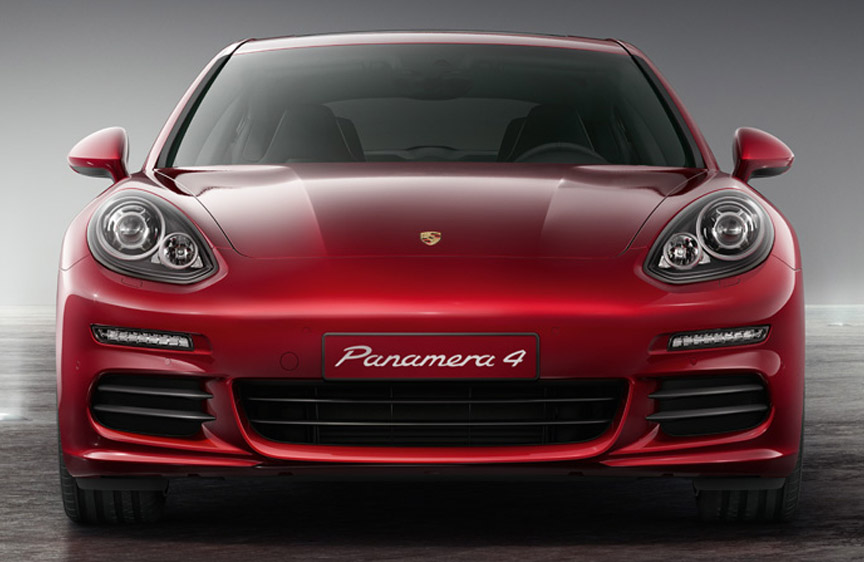
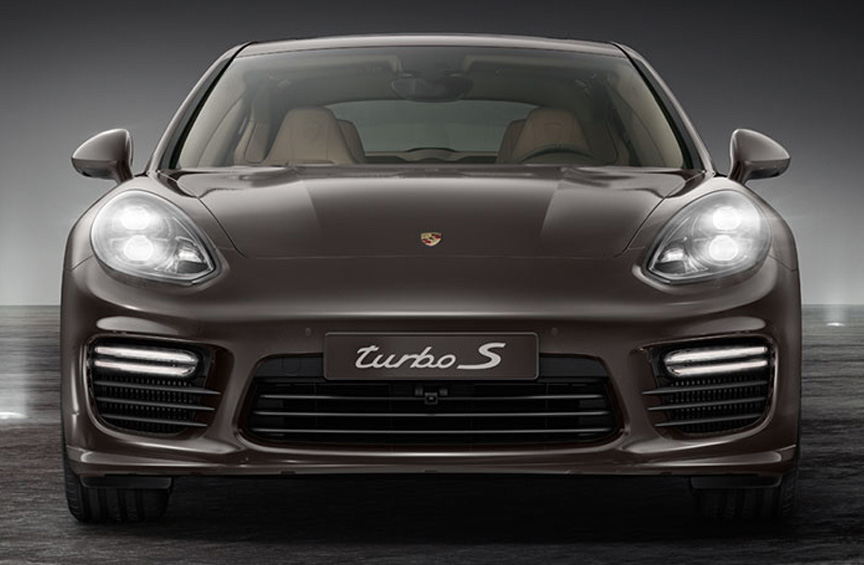
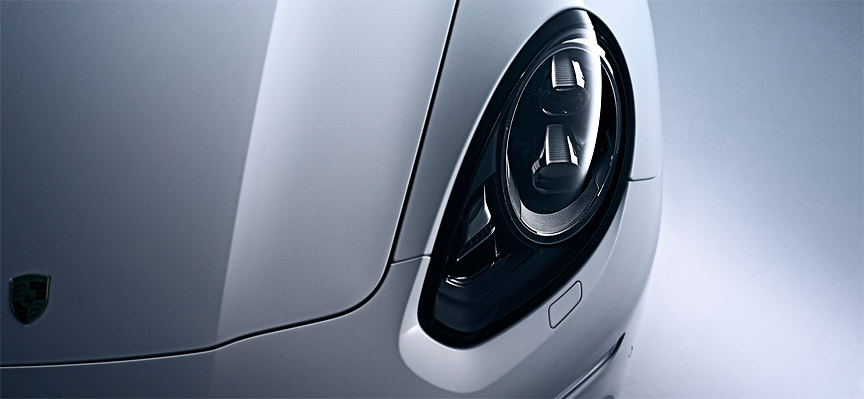
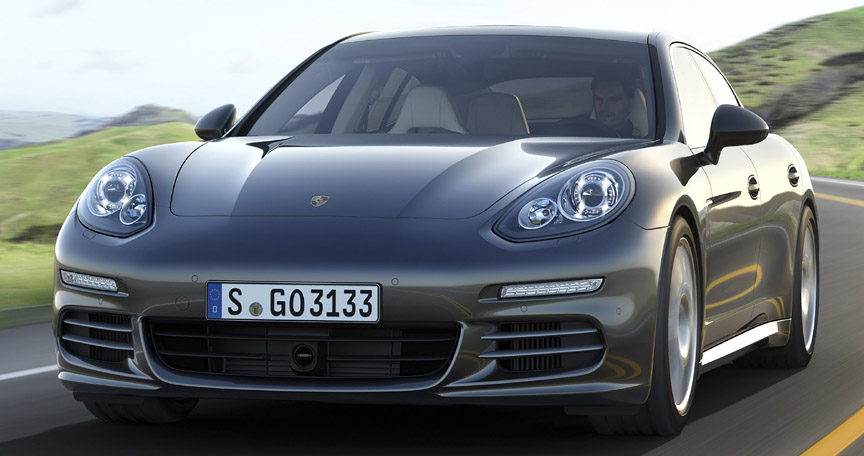
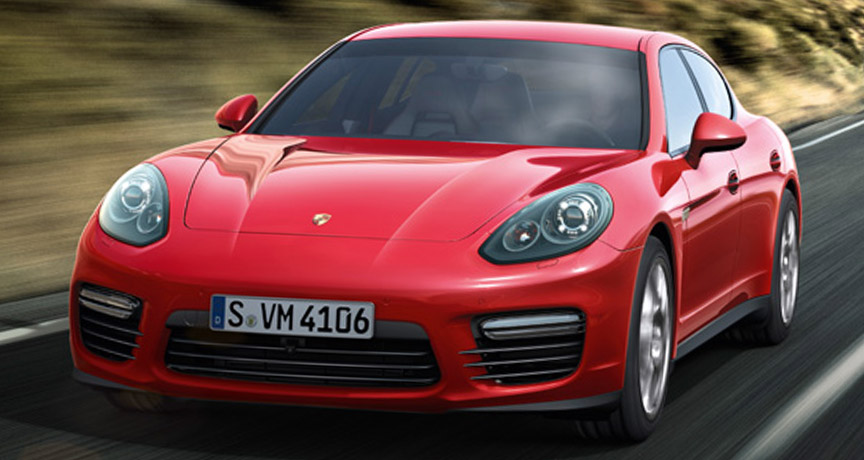
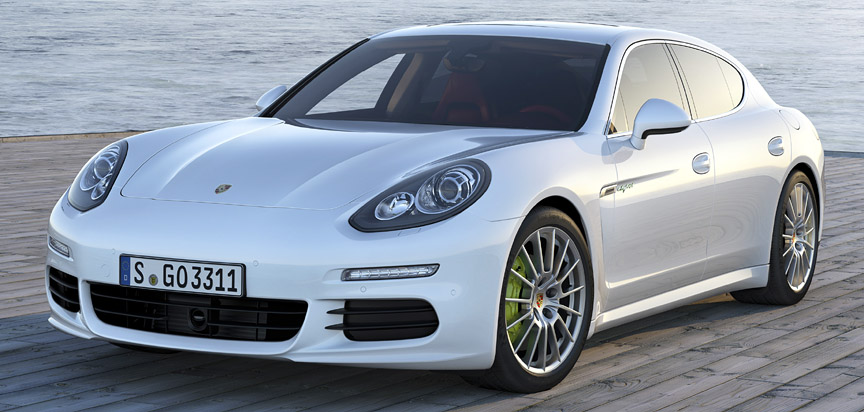


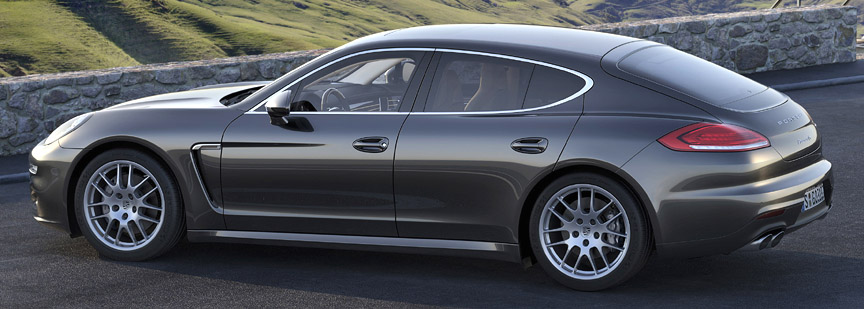
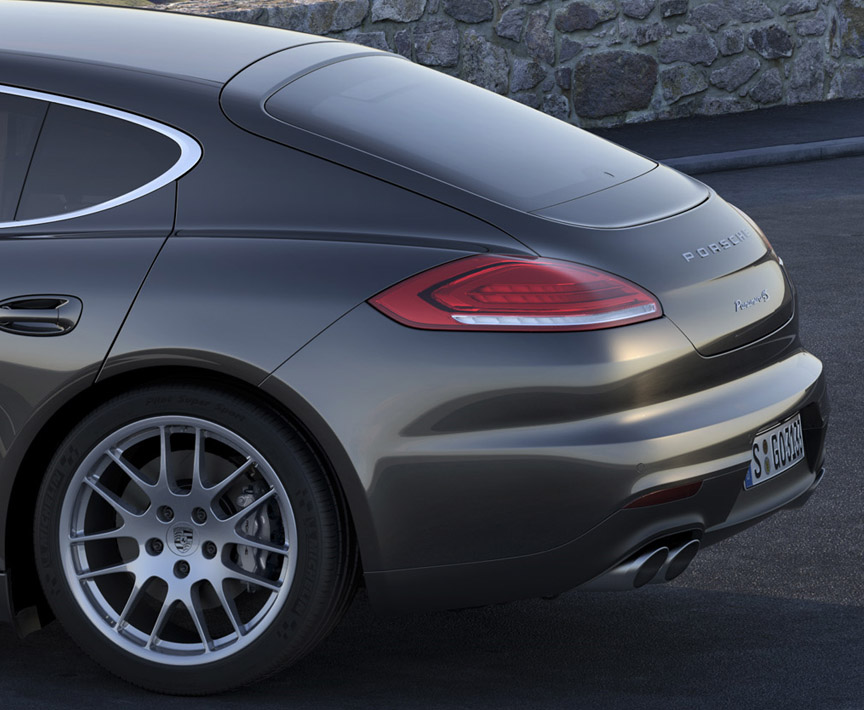
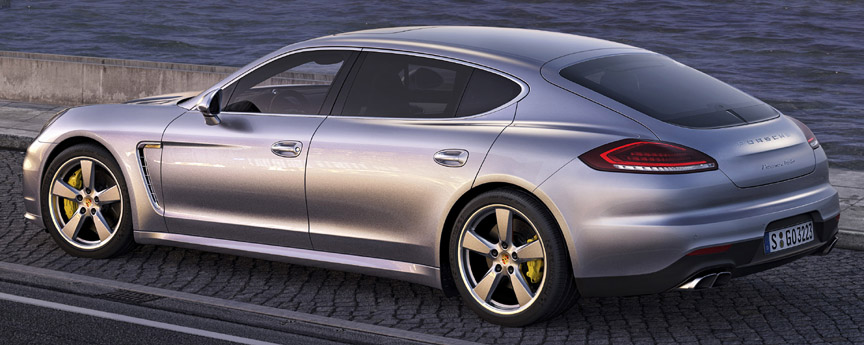
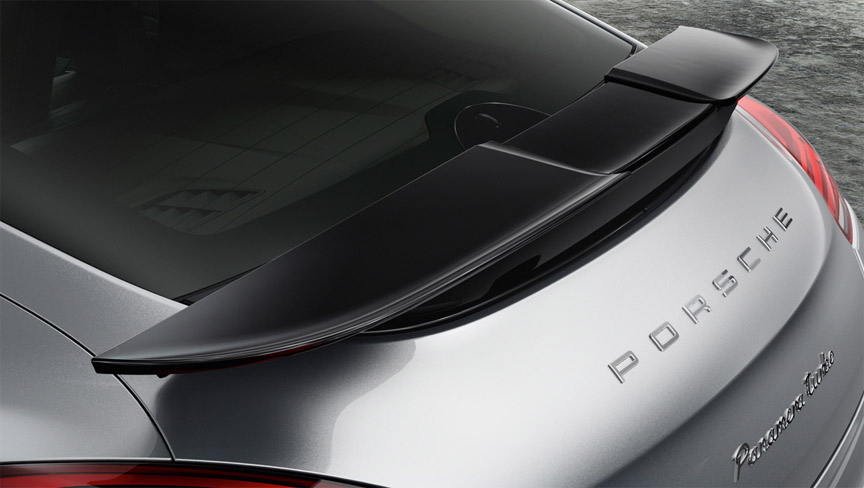
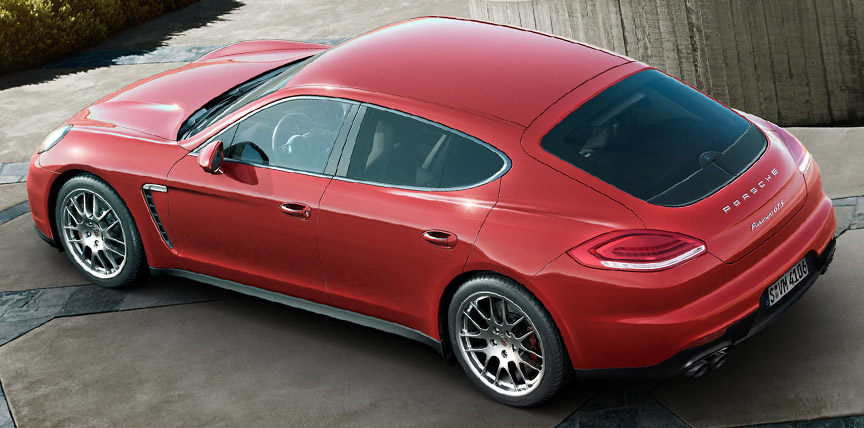
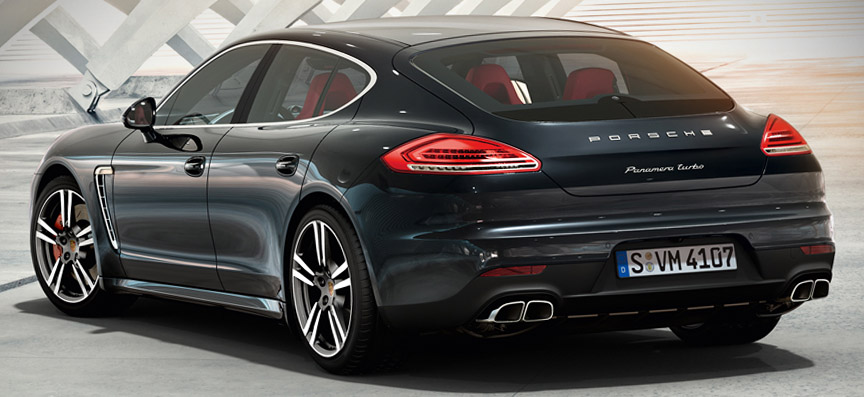
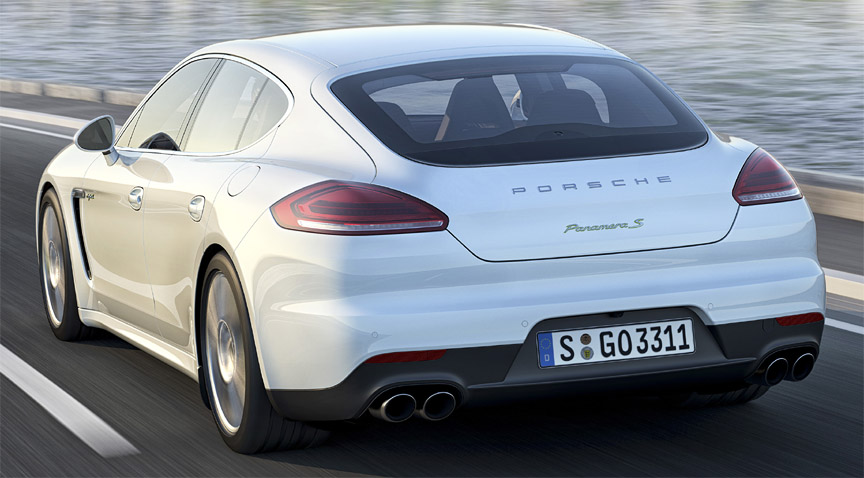
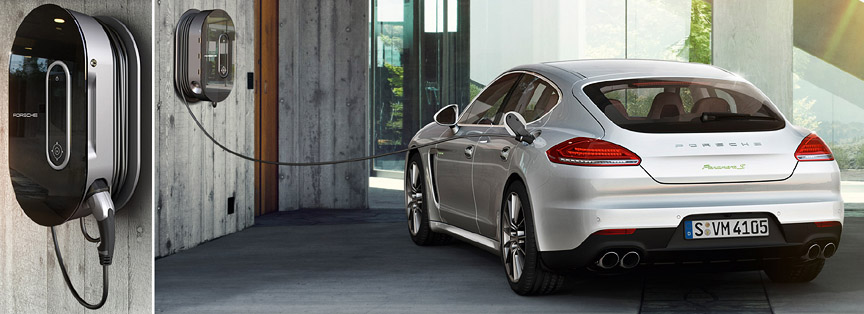
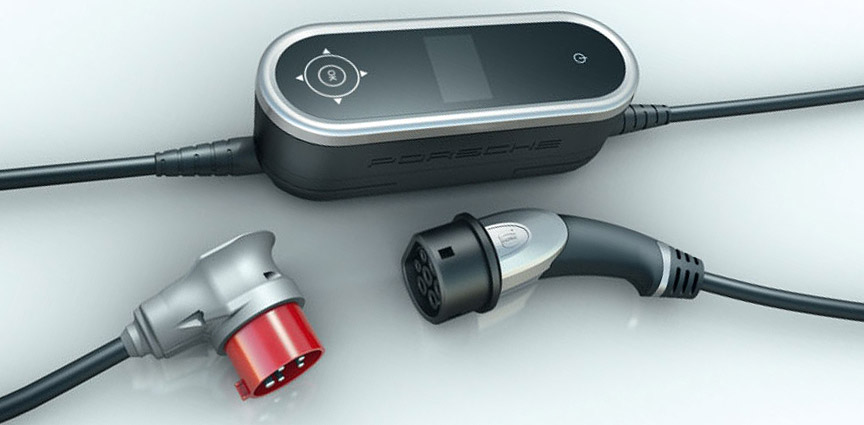
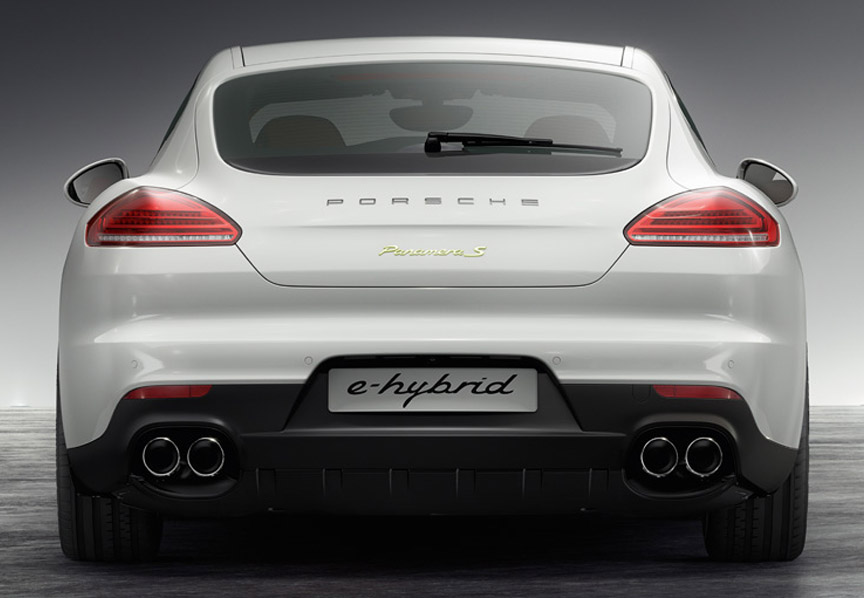
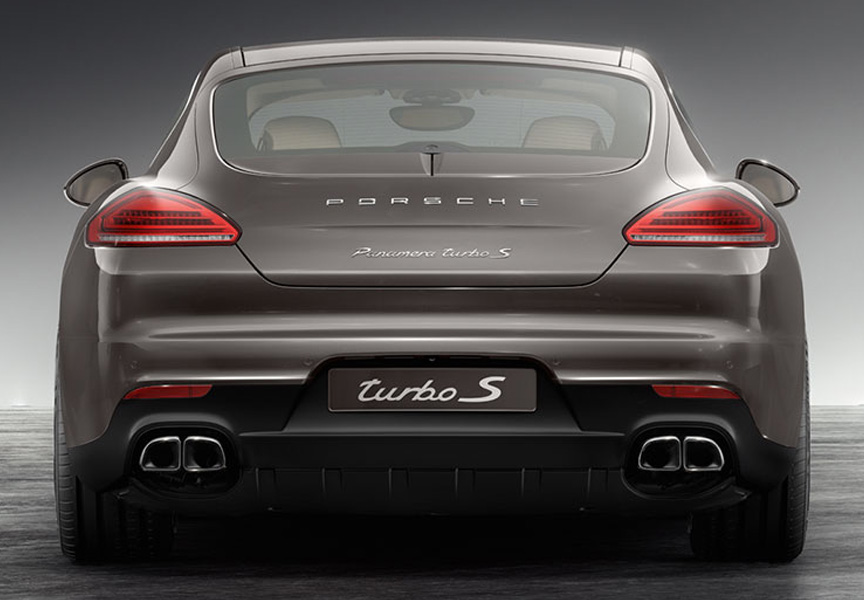
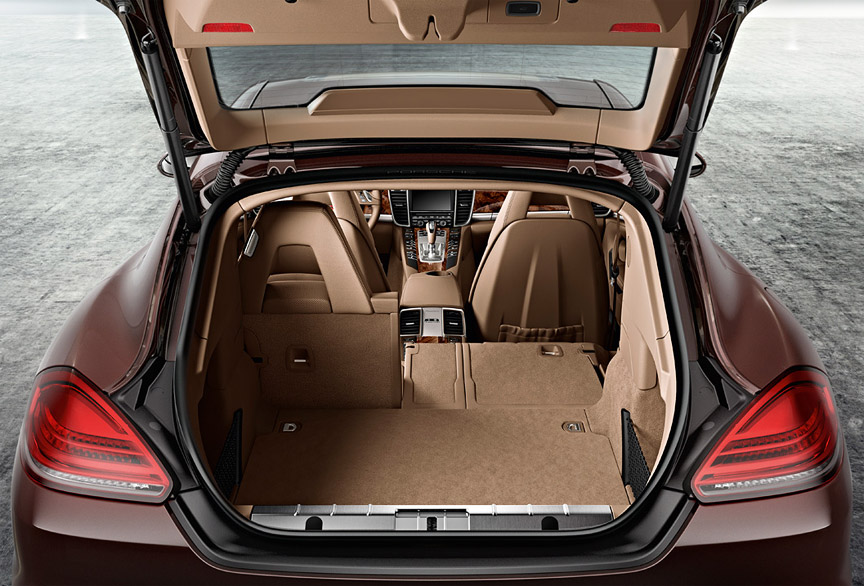
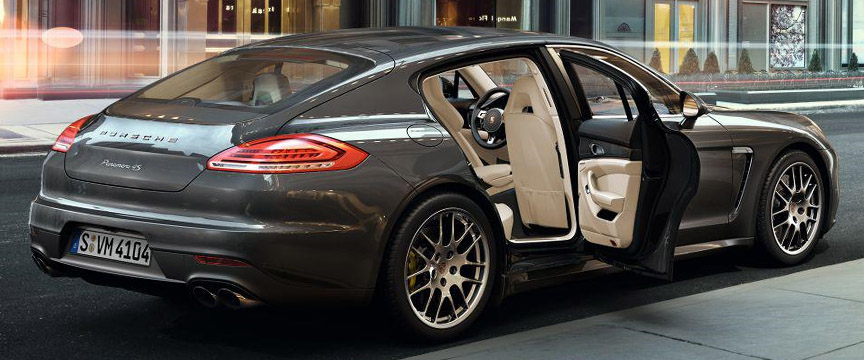
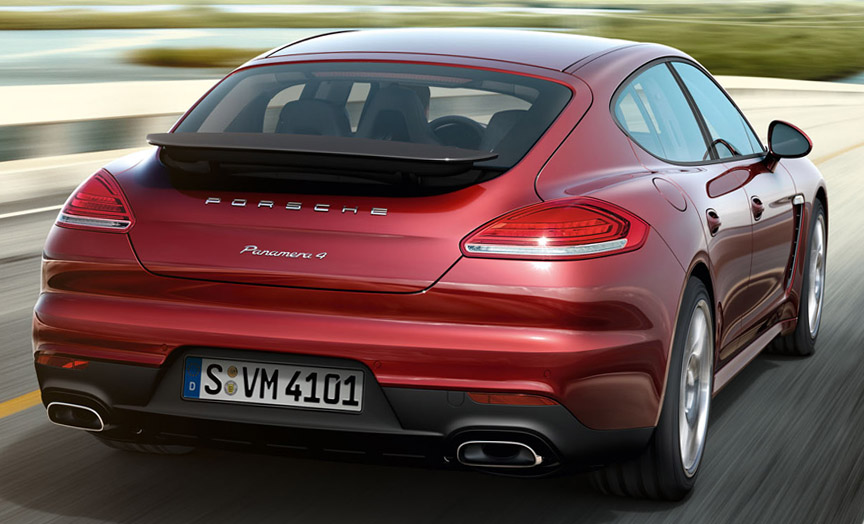
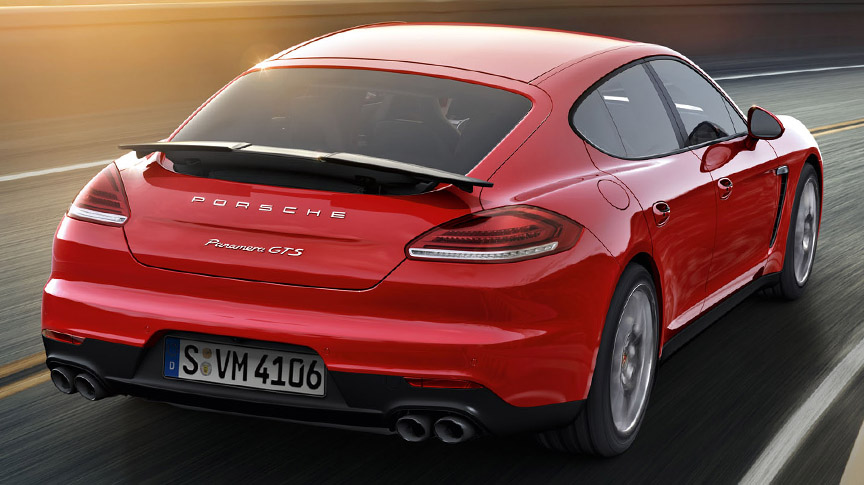
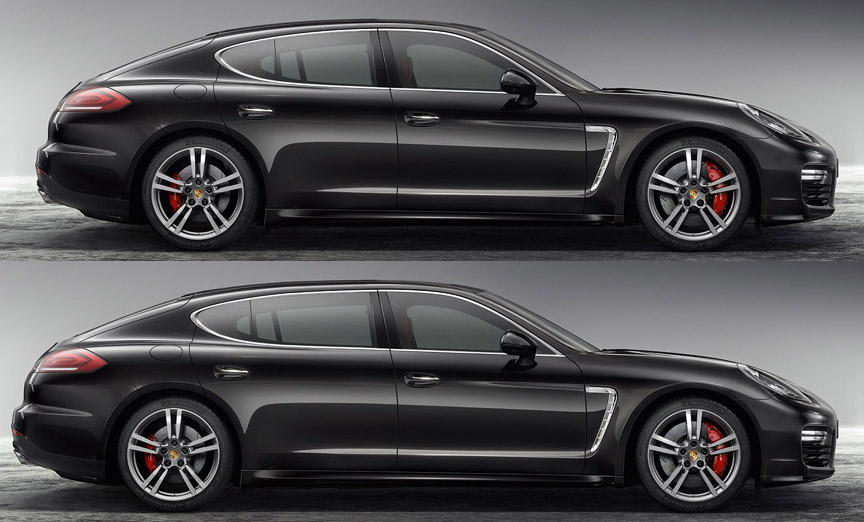
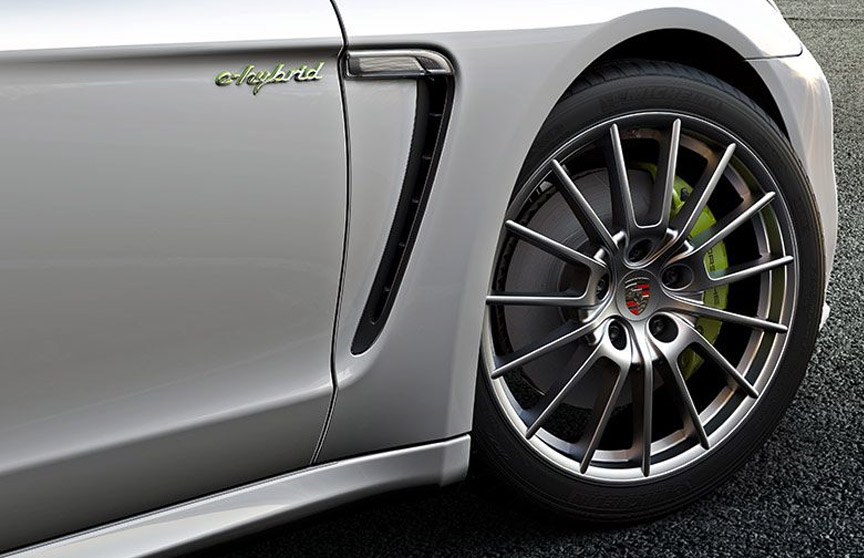
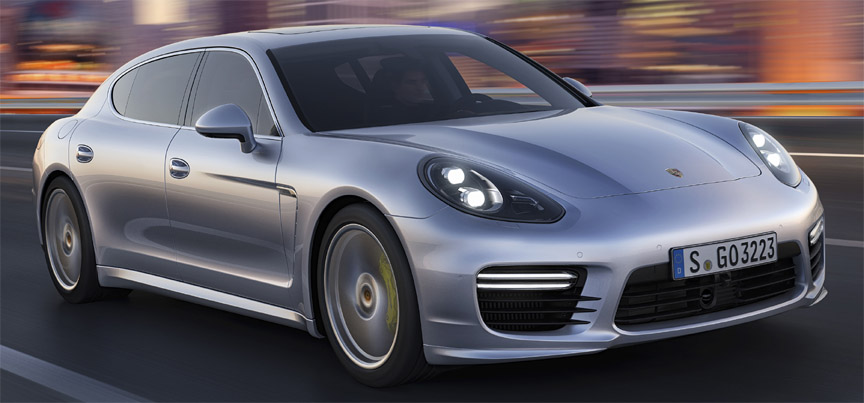
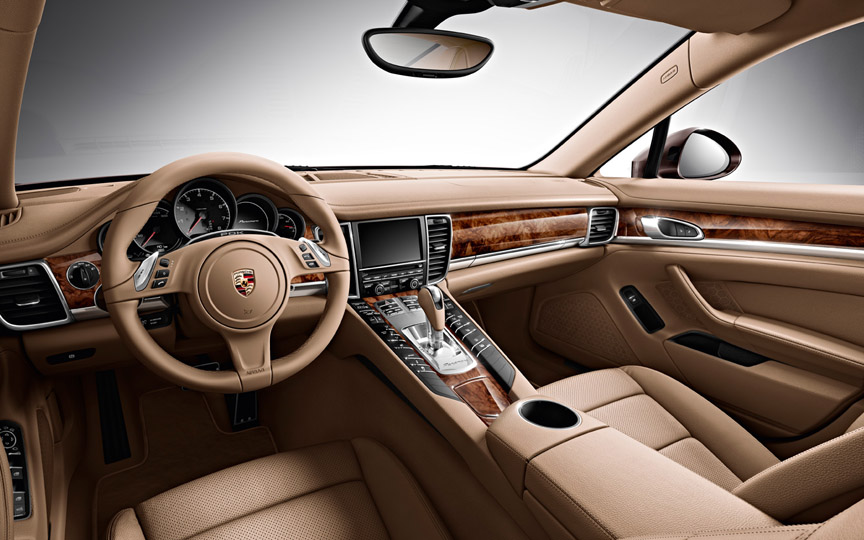
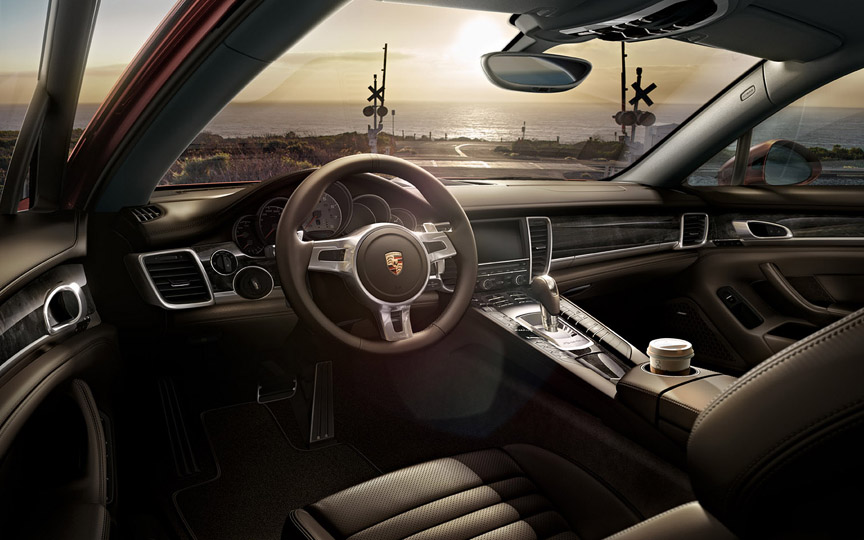
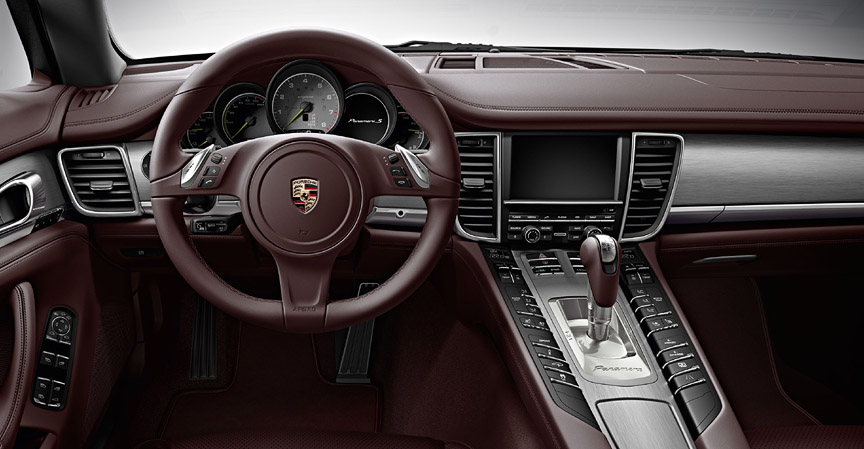
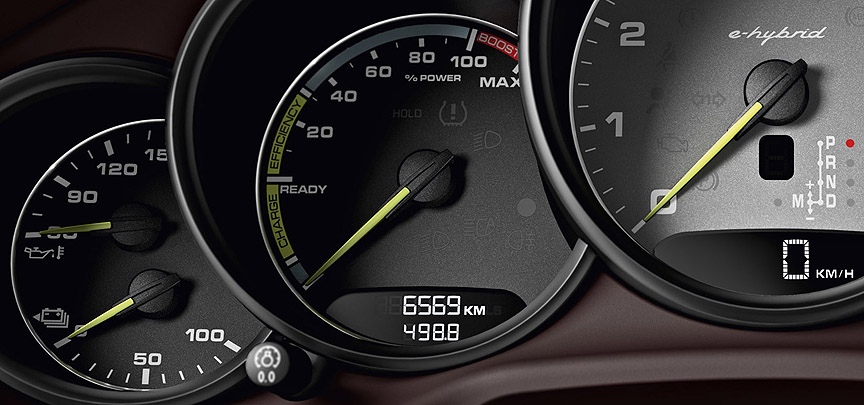
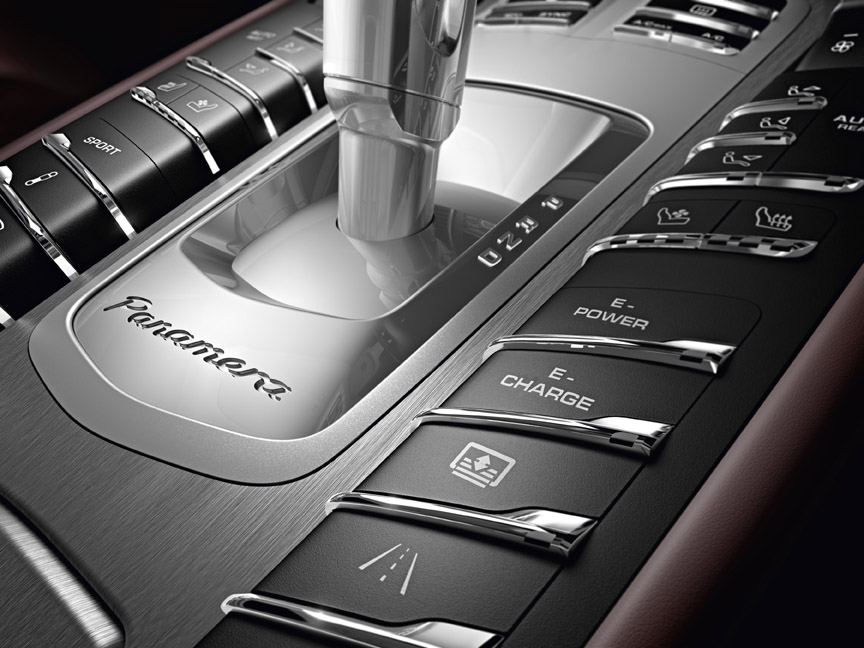
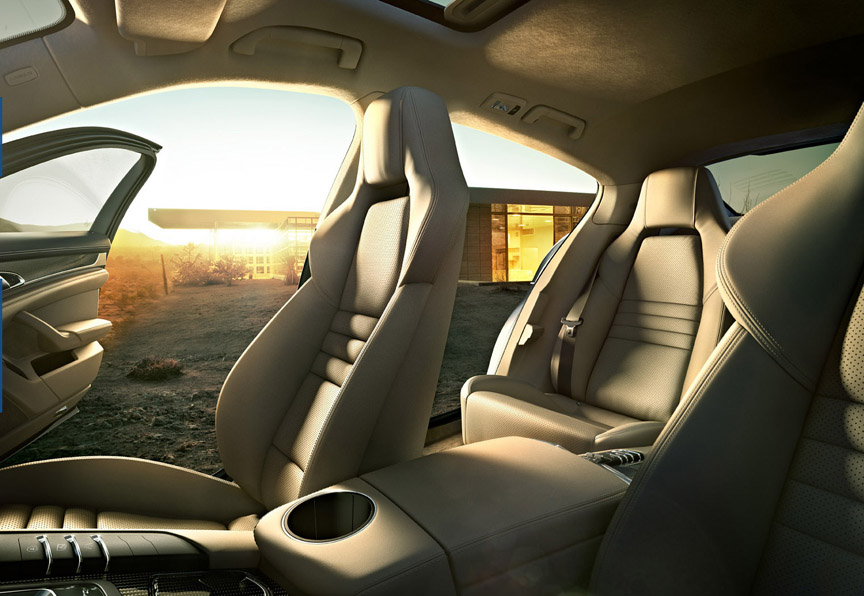
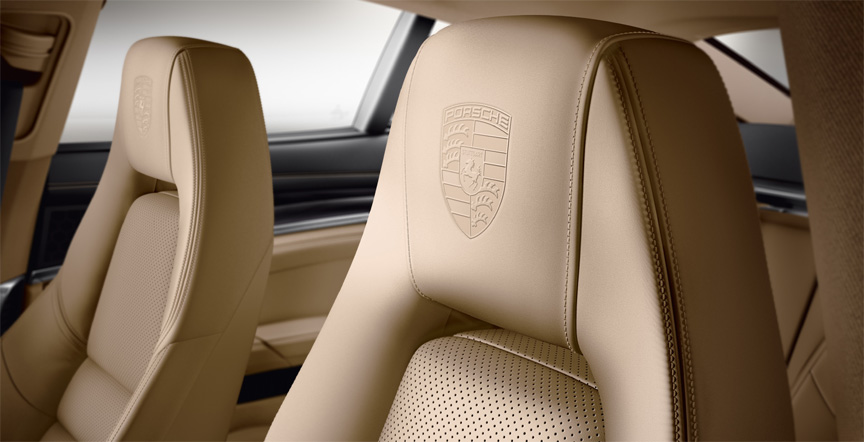
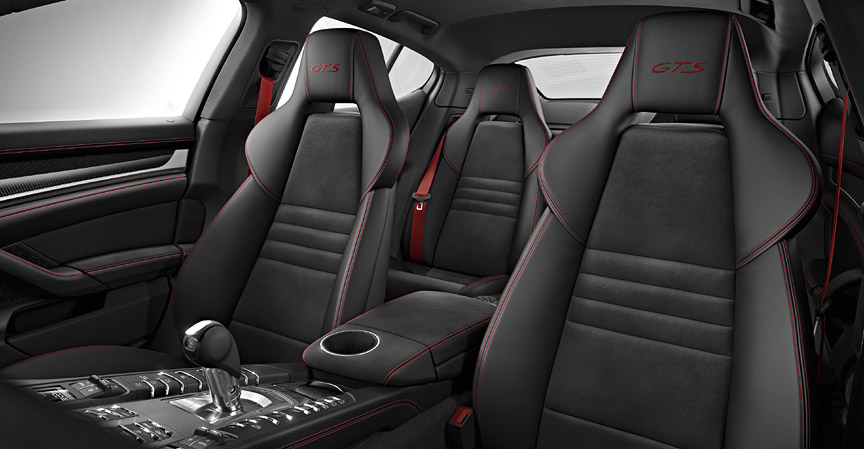
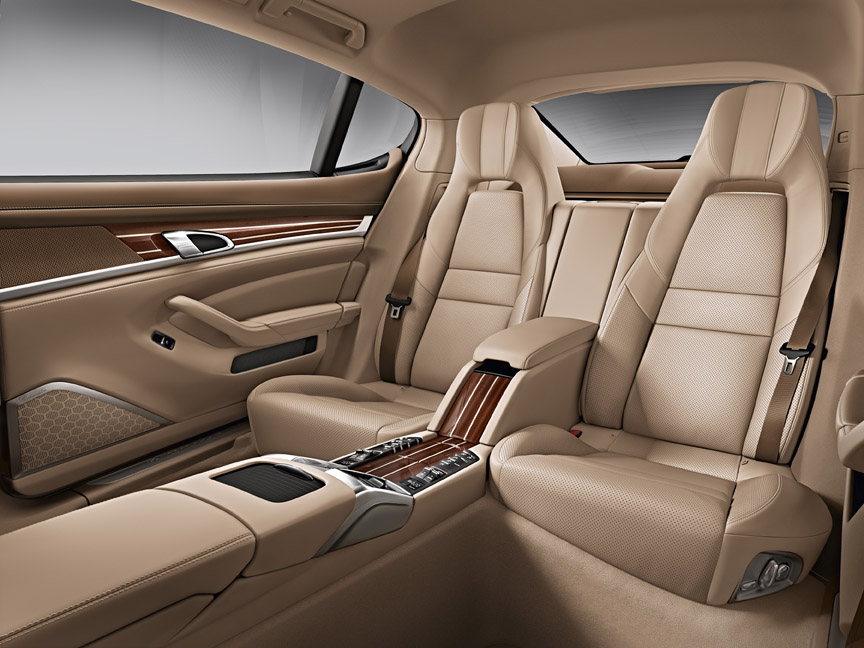
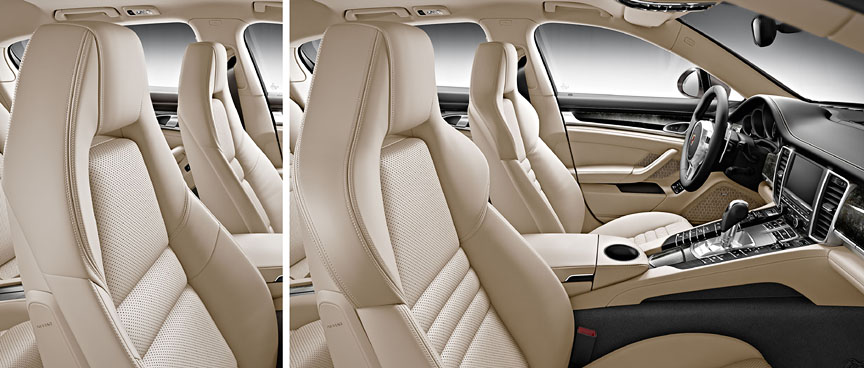
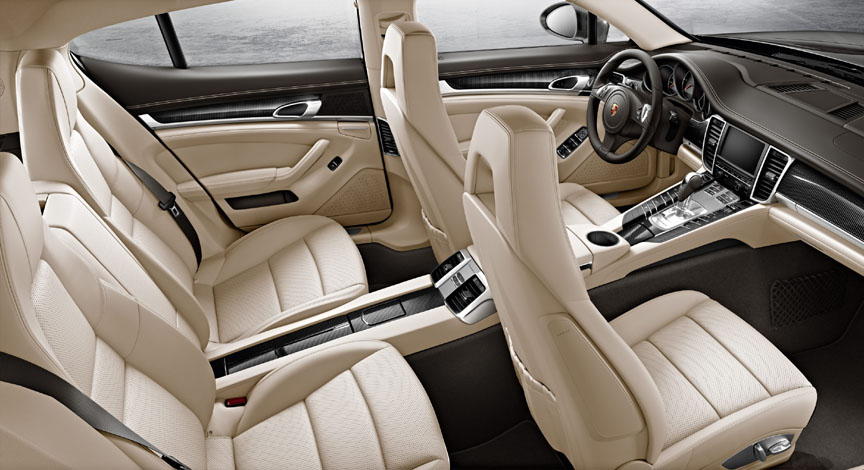
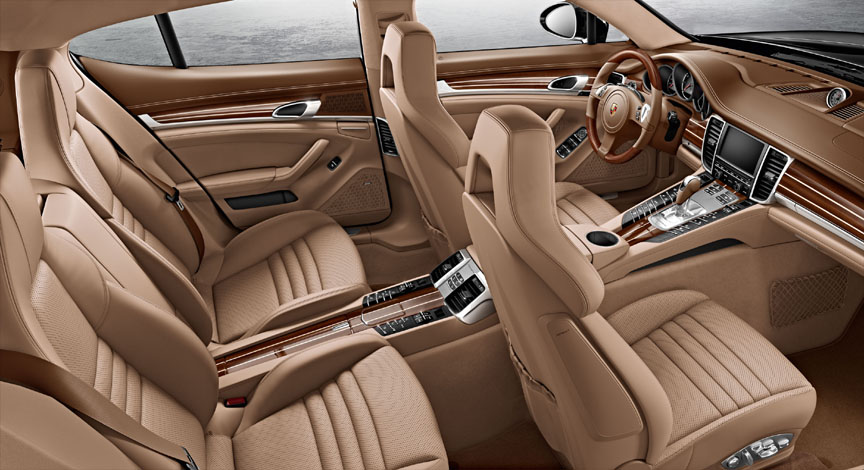
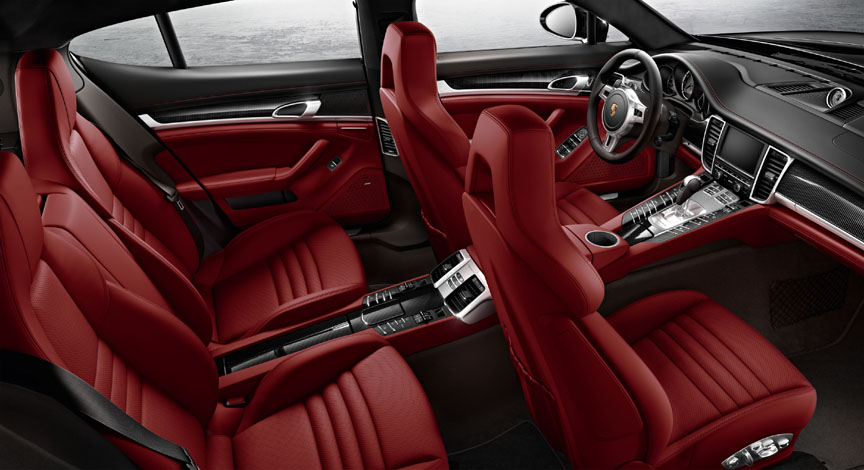
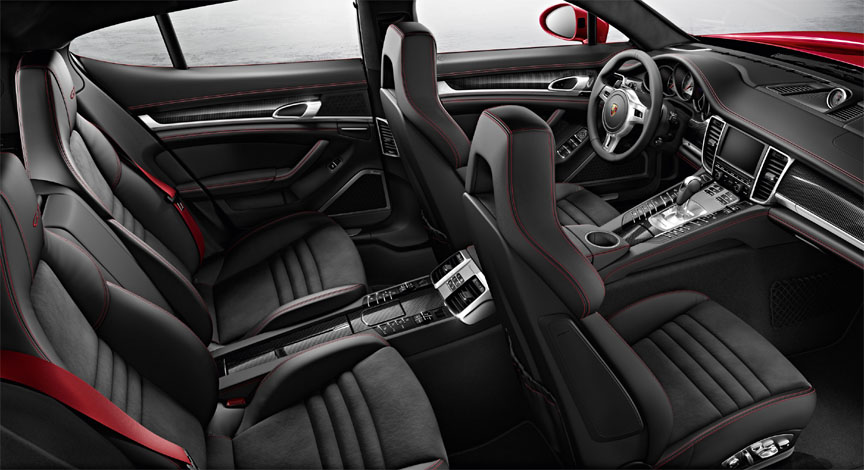
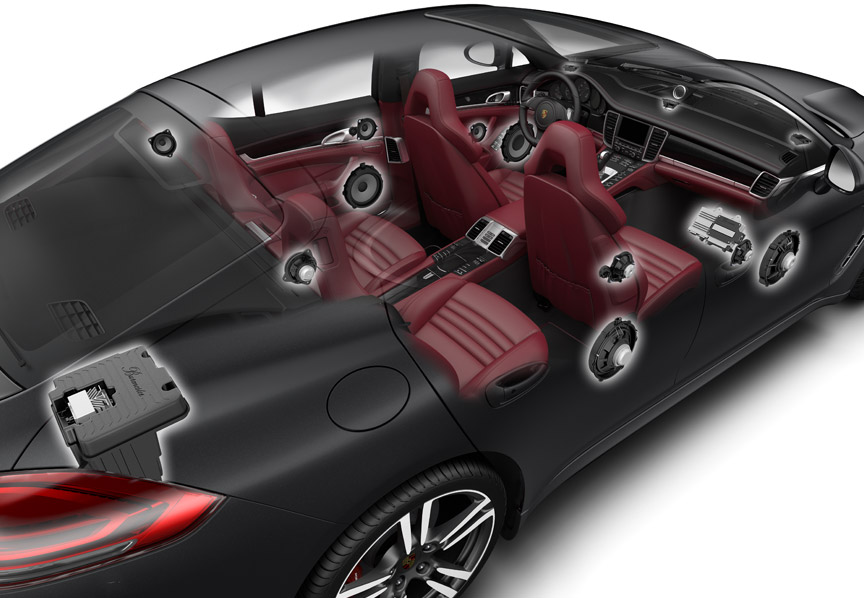
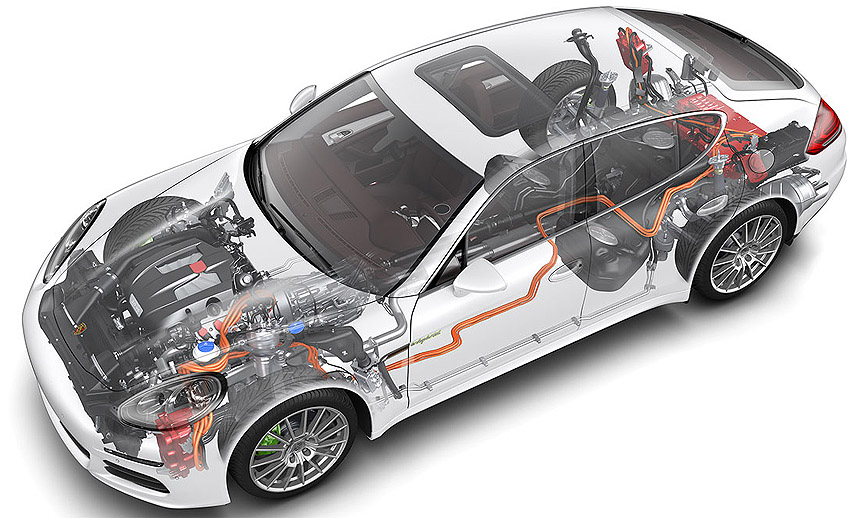
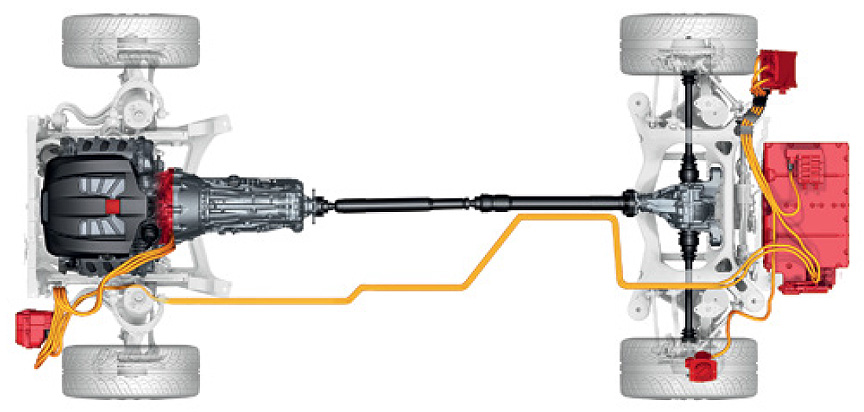
Porsche Panamera Turbo S Executive Exclusive Series
No joke, the full name of the long wheelbase special model created by Porsche Exclusive was 45 letters long, 51 characters with spaces. In addition to standard colours, the Exclusive Series was available in special two-colour version: black with fading brown metallic on the sides. The seat material had a special pattern punched in it. The price was 5 times the price of the Porsche Boxster or 3 times the price of the base Panamera. Production: 100 cars.
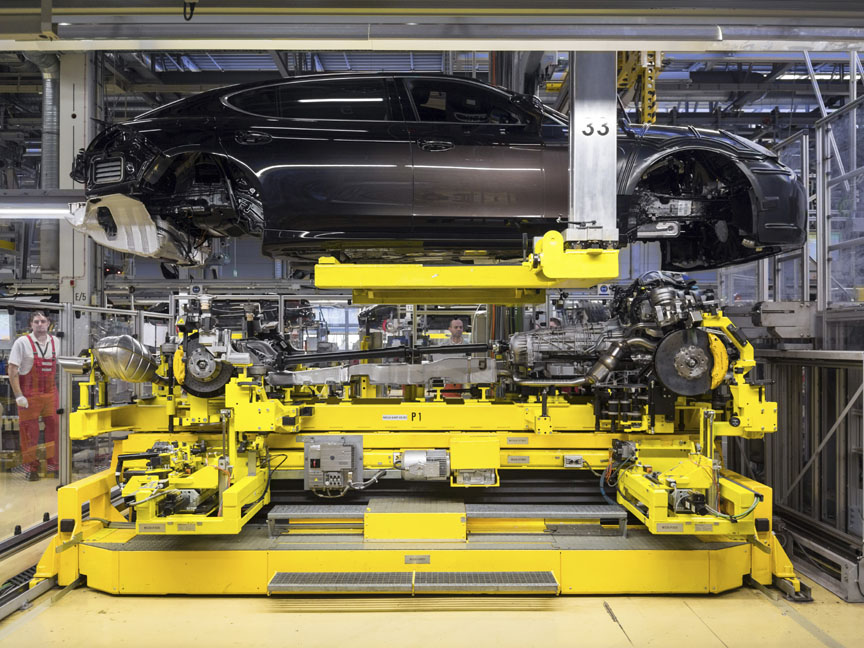
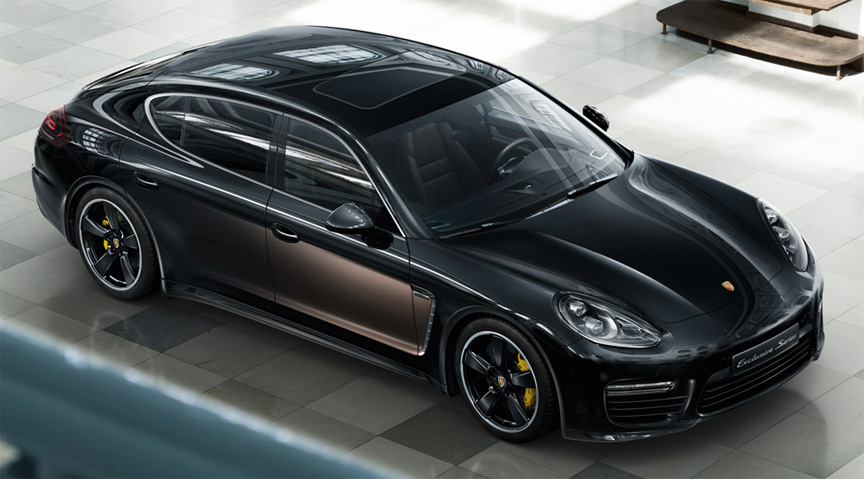

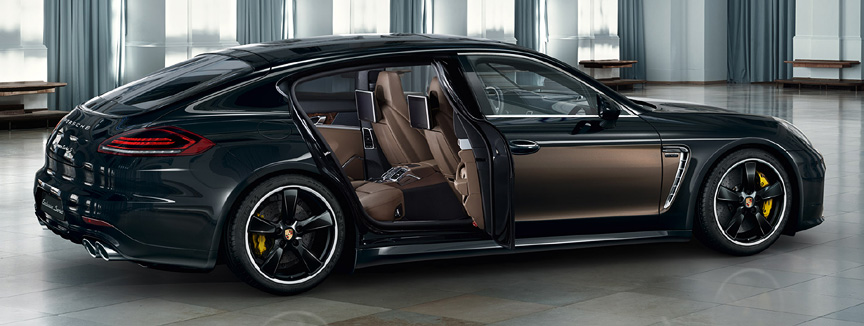
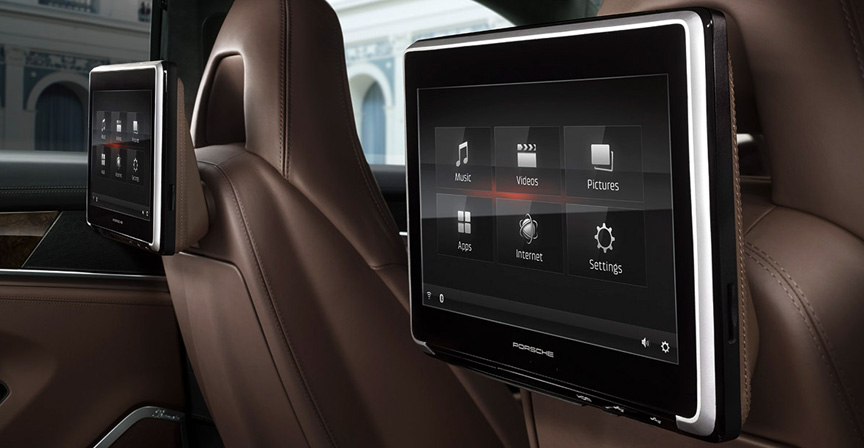
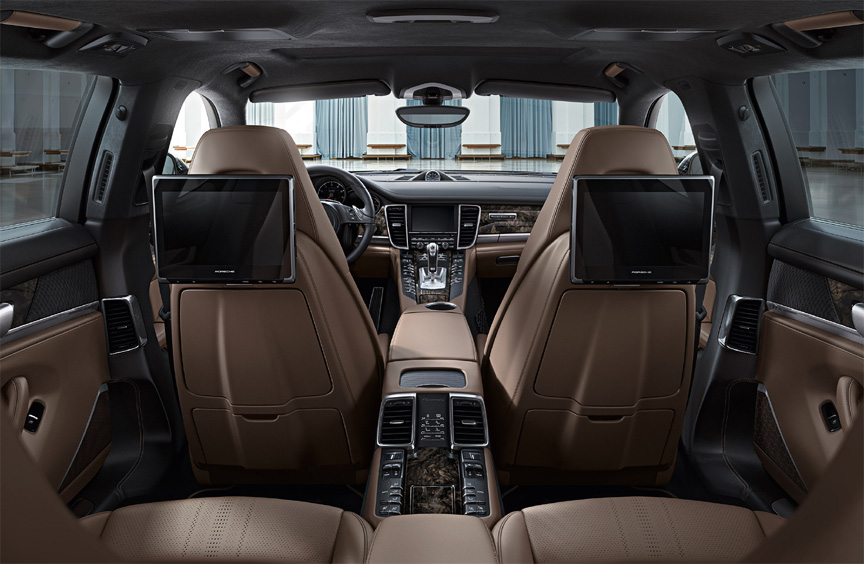
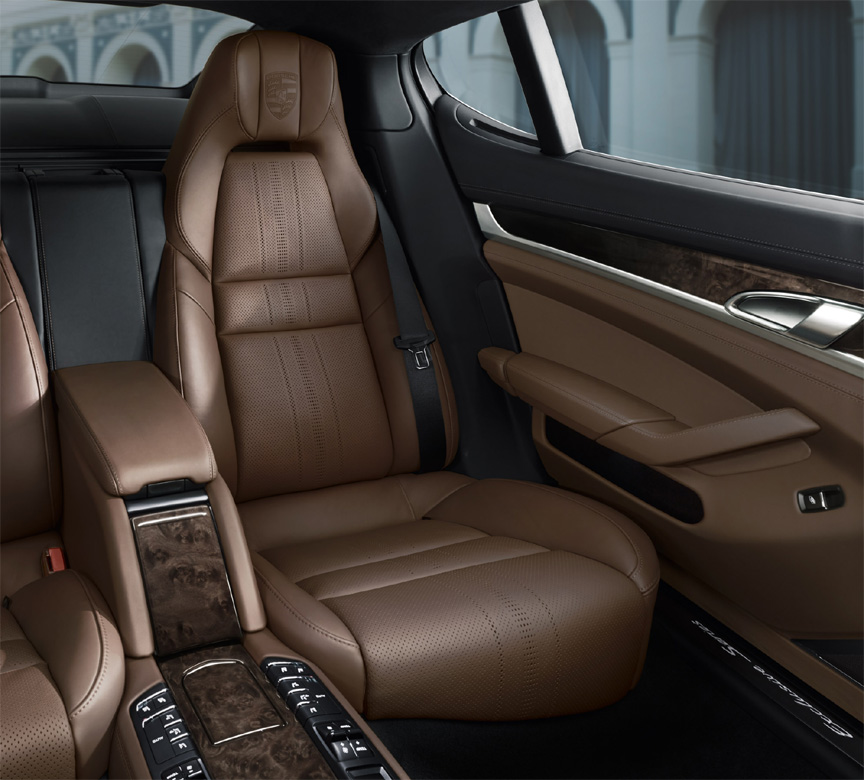
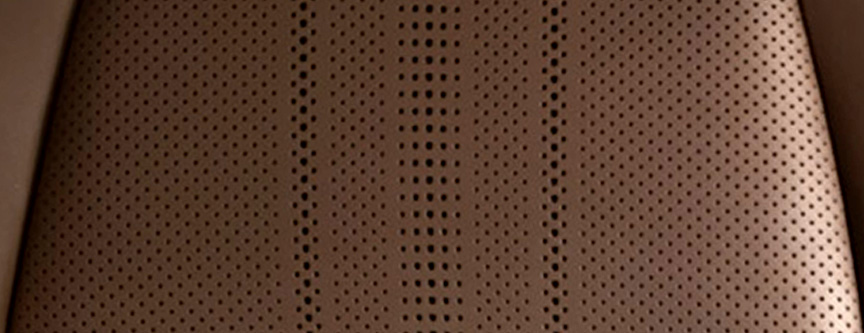
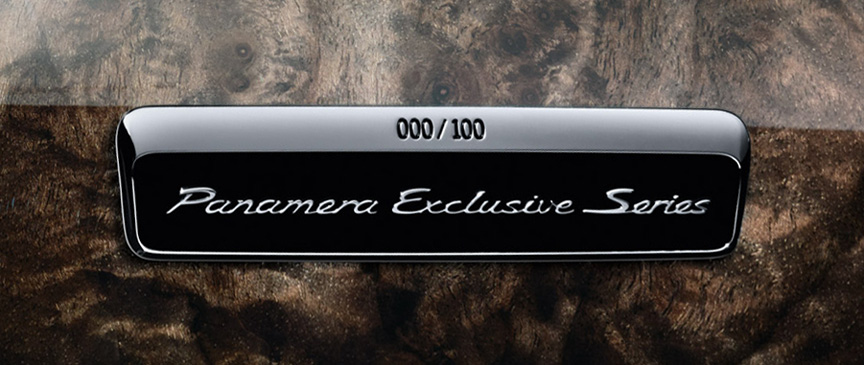
Between April 2009 and August 2016, 164.503 Panamera 970 (970.1 + 970.2) were produced.
